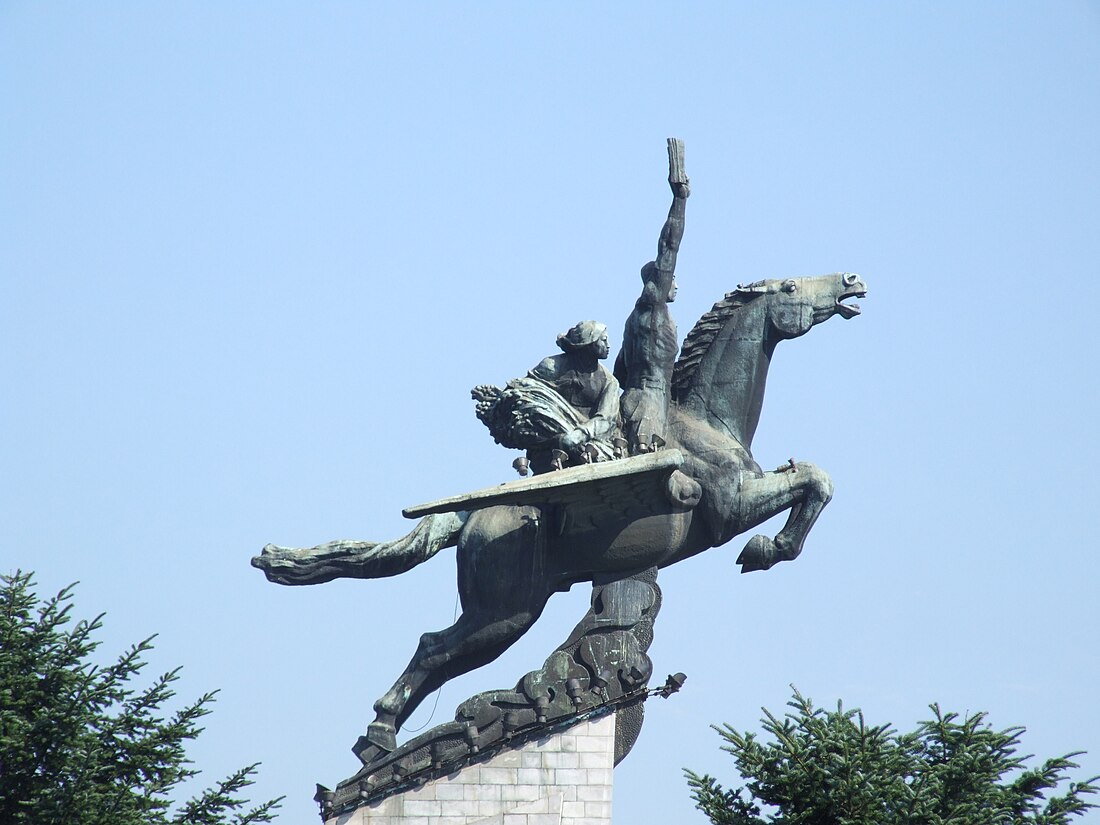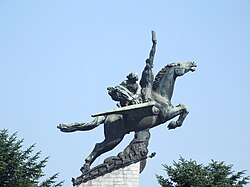Top Qs
Timeline
Chat
Perspective
Qianlima
Mythical horse in Chinese mythology From Wikipedia, the free encyclopedia
Remove ads
The qianlima ([tɕʰjɛ́nlǐmà]; also chollima or cheollima in Korean, and senrima in Japanese; lit. 'thousand-li horse') is a mythical horse that originates from the Chinese classics and is commonly portrayed in East Asian mythology. The winged horse is said to be too swift and elegant to be mounted by any mortal man and is named after its ability to travel one thousand li in a single day.
Since the 3rd century BCE, the qianlima was used as a metaphor for exceptionally talented people and animals, such as Red Hare. The chollima is an important symbol in North Korea and is the namesake of the Chollima Movement.
Remove ads
China
Beginning around the 3rd century BCE, Chinese classics mention Bole, a mythological horse-tamer, as an exemplar of horse judging. Bole is frequently associated with the fabled qianlima (=千里馬; "thousand-li horse"), which was supposedly able to gallop one thousand li (approximately 400 km) in a single day (e.g. Red Hare, sweats blood horse). Qianlima was a literary Chinese word for people with latent talent and ability; and Spring suggests, "For centuries of Chinese history, horses had been considered animals capable of performing feats requiring exceptional strength and endurance.[1]: 80 Possibly it is for this reason that from early times horses have been used allegorically to represent extraordinary people." Bole recognizing a qianlima was a metaphor for a wise ruler selecting talented shi "scholar-officials". Thus, "Geniuses in obscurity were called thousand li horses who had not yet met their [Bole]".[2]
Remove ads
Japan
Keitoku Senrima (Kim Ge-dok), a professional middleweight boxer in Japan, uses the stage name "Senrima" (the Japanese form of Qianlima/Chollima) to reference North Korea's Chollima campaigns and thereby express his Zainichi Korean heritage.[3]
North Korea
The chollima is an important national symbol of North Korea. It is used as the nickname of its national association football team and also as the name of a rocket.[4][5] The state also gave the name to the Chollima Movement, which promoted fast economic development, modeled the Chinese Great Leap Forward.[6] After the Korean War, the country required rebuilding to function again. In order to expedite the construction, Kim Il Sung devised the slogan "rush at the speed of chollima".[7] The North Korean film industry is sometimes referred to as "Chollywood", a portmanteau of "chollima" and "Hollywood".[8] In Pyongyang, the 46-meter-tall Chollima Statue stands next to the Mansu Hill Grand Monument.[9]
See also
References
Wikiwand - on
Seamless Wikipedia browsing. On steroids.
Remove ads

